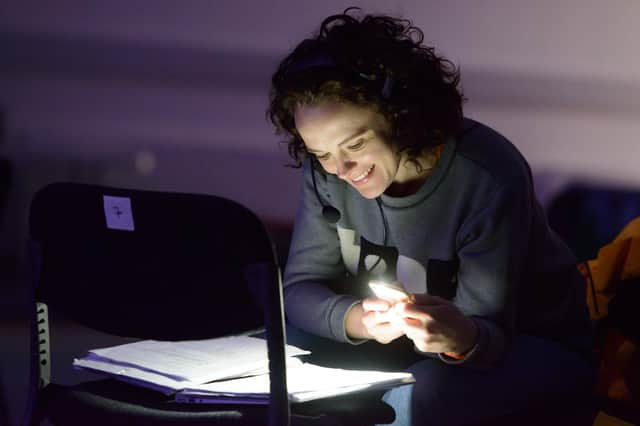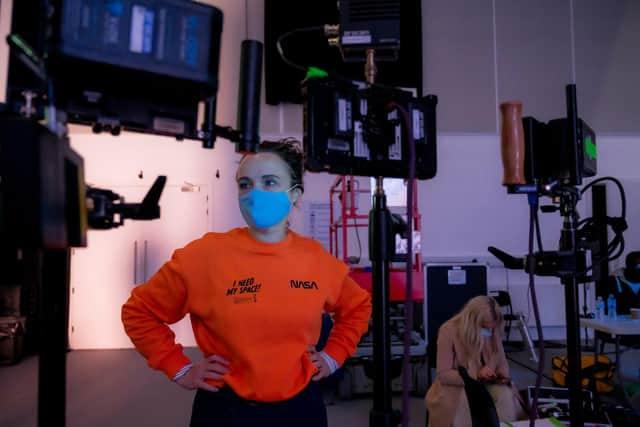‘Big shift’ in recruitment of women for key jobs in Scottish theatre revealed following gender equality campaign


New research has found that women have been appointed to 55 per cent of artistic director roles in Scottish theatre – compared to just 38 per cent in 2015.
Half of the country’s theatre companies are led solely by women now, compared to just 13 per cent five years ago, when the report “Where Are The Women?” was compiled in response to growing calls for action to ensure gender parity in senior roles.
Advertisement
Hide AdAdvertisement
Hide AdHowever the research also found that men “dominated” the leaders of the highest-funded theatre companies in Scotland –the Citizens and the Tron in Glasgow, Dundee Rep, and the Royal Lyceum and Traverse in Edinburgh.


And the report suggested more work needed to be done to ensure better representation of people who are disabled, black, gay, lesbian, transgender across the industry.
The research, which was commissioned by the Edinburgh-based Stellar Quines Theatre Company found that there was now far greater representation of women both on and off-stage.
Jemima Levick, the company’s artistic director, said the findings appeared to show that the industry has "taken notice and acted" over the last five years to reverse "cripplingly low" figures for female representation across the board.
Women are said to make up 52 per cent of performers and 63 per cent of set and costume designers, compared to 46 per cent and 29 per cent respectively in 2015.
Although the proportion of shows directed by women rose marginally, from 47 per cent to 48 per cent, the actual number fell from 66 to 61 due to an overall decline in the number of shows staged.
Of the 1338 people said to have worked in Scottish theatre over the last year, 48 per cent were women, compared to 39 per cent in 2015.
Advertisement
Hide AdAdvertisement
Hide AdThe new research, which was carried out by theatre consultant Christine Hamilton, who also worked on the previous “Where Are The Women” study, states: “Theatre companies themselves have responded to the challenge to address the question of gender balance.
"This was already happening as companies adopted equality, diversity and inclusion strategies as required by Creative Scotland, and the publication of the previous report put the issue back on the agenda.
"One possible driver is the dramatic rise in female artistic directors. With a relatively small number of organisations, even a small shift in recruitment by boards delivers a big percentage shift."
Ms Levick said: “We are really heartened to see these improvements since Christine’s original report. It suggests that the Scottish theatre industry took notice and acted to reverse some of the cripplingly low figures previously reported.
Ms Hamilton said: “Real progress has been made on the equality of opportunity for women in Scottish theatre.
"The task now is to sustain these gains and build on where we are today – 51 per cent of the population is female. However, we cannot ignore the difficulties facing women from minorities who make up this 51 per cent. That’s the challenge that still faces us.”
Joyce McMillan, theatre critic at The Scotsman, said: “I’d say the huge improvements in female representation in some categories - notably artistic leadership of organisations - is very encouraging.
Advertisement
Hide AdAdvertisement
Hide Ad"It’s also cheering to note a substantial improvement in areas like lighting design and music and sound design, where female representation was very poor so recently, although there is still more to do in those areas to encourage women to become involved.
"Overall, I’d say issues around the proper representation of women and their perspectives have become much more widely discussed in all the creative industries over the last half-decade, which has also seen the #metoo movement, and strong movements for better representation of other previously disadvantaged groups.
"And that can only be a healthy development, towards a theatre culture that really finds, uses and develops all the nation’s available talent, to create the best work possible.”
A message from the Editor:
Thank you for reading this article. We're more reliant on your support than ever as the shift in consumer habits brought about by coronavirus impacts our advertisers.
If you haven't already, please consider supporting our trusted, fact-checked journalism by taking out a digital subscription.
Joy Yates
Editorial Director
Comments
Want to join the conversation? Please or to comment on this article.